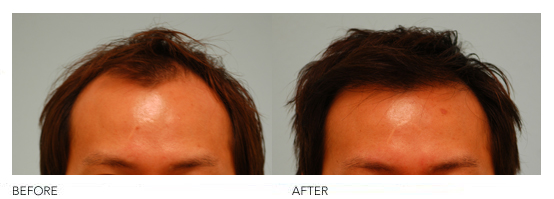Ethnic Hairline Designs for Hair Transplantation
When creating a hairline for a particular individual, it is important to consider many factors, one important element is ethnic sensitivity. Hairlines differ based on gender, facial shape, and age as well, and these are starting points for any physician in his/her design work. However, ethnic differences will be the focus of this article, as we explore how the shape of a hairline has certain general patterns based on one’s ethnicity.

We will start with Asian hairlines first, since I am Asian myself. Asian faces tend to be broader and rounder than their Western counterparts, especially Chinese and Korean faces. The hairline shape matches the face shape in that the hairline tends also to be broader and rounder in shape. There tends to be less of a widow’s peak in the center but a subtle presence of one can serve to break up the roundness of the design. The shape of the hairline also has less lateral suppression, i.e., it tends to stay rounder even toward the fronto-temporal region. Because Asian hairs grow out straight and black, if the angles of the hair grafts are not kept very low vis-à-vis the scalp the result can look unnatural. In addition, the novice surgeon is more prone to book leaf open i.e. create splaying of the recipient sites rather than aim them forward that can truly compromise density and create an unnatural result, especially in a very broad, round hairline design. (For more information view our Asian hair transplant page.)
For the African hairline, the shape tends to be straighter with very little to no fronto-temporal recession. It can be almost a straight right angle at the fronto-temporal angle and still look very natural. Depending on the degree of hair loss and the feasibility of creating this shape, the surgeon should consider creating a squared off frontal shape of the hairline. Clearly, with more advanced hair loss the fronto-temporal angle will most likely need to be rounded to make the total result both attainable and also natural, which will also accommodate further hair loss as one ages. Obviously, facial shape can influence the artistic design of the hairline but the above parameters can serve as a basis for one’s design work. Fortunately because of the curly nature of the hair shaft, the travel distance to cover bald scalp for each hair follicle is good so that hair density can be more easily achieved with fewer total grafts used. (For more information view our African hair transplant page.)
The Hispanic hairline can be influenced more by the exact genetic makeup of the so-called Mestizo identity. The White individual from Spain will have a hairline with a natural fronto-temporal recession like their White counterparts. However, the person hailing from Central or South America may have a different ethnic makeup owing to centuries of intermarrying. For instance, the sugar trade that brought African slaves over to the Caribbean may have individuals that look more African than other types of races. The Dominican Republic and Haiti are good examples of a population that is primarily darker in aspect and in which hairlines would probably match more what was described above for African individuals. The indigenous Indian populations of Central America have more an Asian appearance because originally they crossed over the Bering Straight through Alaska to arrive in Central America. Therefore, some hairlines can resemble what I described above for Asian hairlines. This Mestizo hairline therefore must be considered as an amalgam of different races and adjusted based on which race is the predominant presence in a particular individual. (For more information view our Hispanic hair transplant page.)
The Middle Eastern hairline also proves to be a bit elusive since there is considerable variability in the term “Middle Eastern”. However, for simplicity’s sake, the facial shape and hairline design more closely matches that of the neighboring white, European hairlines, i.e., the typical fronto-temporal recession and suppressed lateral hairline shape. Obviously, again it is important to overlay a considerable degree of artistic judgment marrying age, donor density, hair caliber/curl/color, and facial shape plus aesthetic desires of a patient (so long as they are reasonable). Of note, the above hairline shapes are primarily focused on male-pattern baldness. Women have an altogether different shape that is more universally rounder and closed off at the fronto-temporal angle and are outside of the discussion of this article. (See womens hair loss page for more info.)
With ever increasing rates of interracial couples, these hard and fast lines that were established above are beginning to blur. I have managed many half black half white hairlines with some veering toward the black and some veering toward the white depending on the prevalence of their overall facial features and hair quality to influence my design work. This is also true for mixed Asian individuals that I have worked on. So the term “Mestizo” today really applies almost to all races owing to the intermarrying that is more prevalent today. Using these basic guidelines is still a helpful starting point for any novice or skilled hair transplant surgeon.
Samuel M. Lam, MD, FACS is a board certified, hair restoration surgeon specializing in hairline design and ethnic hair transplant procedures for men and women. To schedule a consultation call 972-312-8105.




